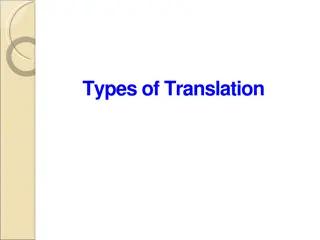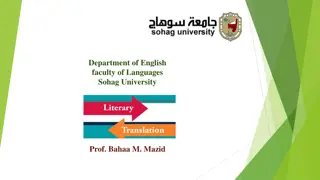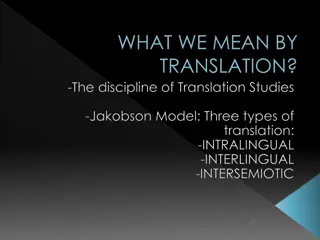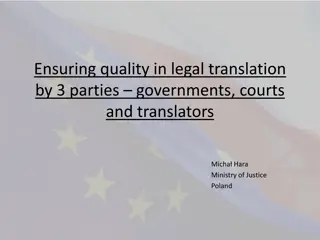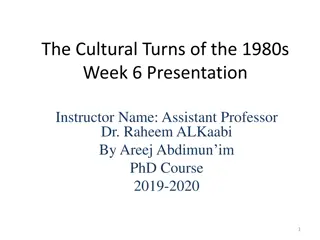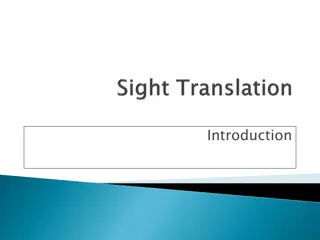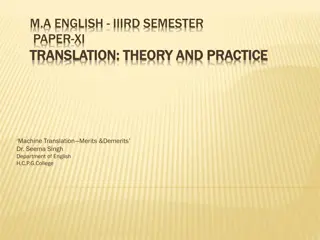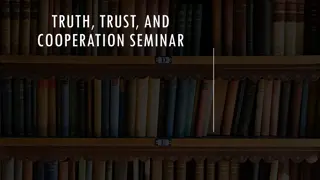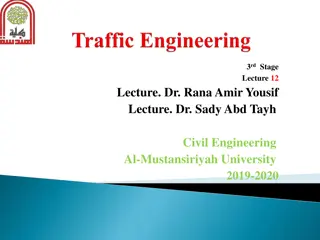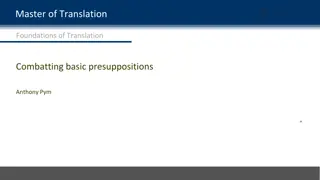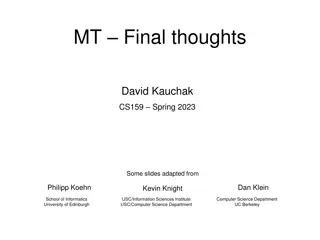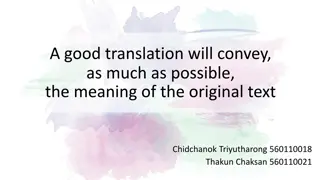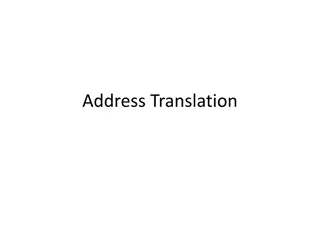Mastering Sight Translation: Techniques and Best Practices
Sight translation involves transforming text from a source language into a target language orally. The process includes reading for comprehension, identifying main points, addressing potential issues, and segmenting text effectively for oral translation. Practice these steps to improve your sight translation skills.
Download Presentation

Please find below an Image/Link to download the presentation.
The content on the website is provided AS IS for your information and personal use only. It may not be sold, licensed, or shared on other websites without obtaining consent from the author. Download presentation by click this link. If you encounter any issues during the download, it is possible that the publisher has removed the file from their server.
E N D
Presentation Transcript
Sight Translation Lecturer: N rah I. Almohizea 1
Outline Introduction to sight translation: Definition of sight translation Process of sight translation Example Notes to be considered How to practice 2
Definition What is sight translation? Sight translation transforms a -------- text into a --------- text. It involves reading a text (silently) in the ---------------- (SL), and then speaking it in ---------------------- (TL). 3
Process of sight translation Stage 1 (reading comprehension) Take a maximum of three minutes to read the text. You will not have the time to translate the whole text at this point. What you should do at this stage is: 4
o get a general idea of the type and content of the text, o identify the main points, o pinpoint potential problems, o write down any equivalents that come to mind for key words o try to segment the text into chunks that are large enough for analysis and comprehension, but short enough for oral translation. 5
The segments can be sentences - if they are short and simple, clauses - if the sentence contains more than one clause, or phrases - if the sentence contains a number of specific details. 6
Get a general idea of the type and content of the text ---------------------------------------------------. 7
Identify the main points -------------------------------------------. -------------------------------------------. 8
Identify potential problems (i.e. problems related to the source language (difficult terms, or complex structures). 9
Stage 2 Mark off the units of meaning. 107 die in crane crash at Makkah Haram MAKKAH An enormous construction crane crashed in the Grand Mosque in stormy weather on Friday evening, killing at least 107 people and injuring 238, Saudi authorities said. 10
Stage 3 Initial translation Translate sentence by sentence, focusing on one unit of meaning at a time whilelooking at your ST, and make a note of any problems you had. 11
Stage 4 Revise any problem that you had in stage 3. 12
Stage 5 Delivery (recording) Translate sentence by sentence, focusing on one unit of meaning at a time. 13
Notes to be considered To deliver good translation, you need to pay attention to: your reading comprehension. the register and style of the text: level of formality, direct quotes, technical terms (commonly used) Before delivery you need to pay attention to: Accuracy Grammar; pronunciation, tone and clarity of your voice. Pacing 14
How to practice? Look up any difficult terms and compile an alphabetically arranged glossary. Practice out loud always, in presence of audience or without an audience. Practice makes ----------. Record yourself on an MP3 device (or videotape) using your phone to so see how you sound (and also look) to your audience. Practice with a variety of text types such as, newspaper's articles, legal documents, patient information forms and reports, consent forms, letters, court transcripts, etc. Keep a record of your speed for your time management other strategies? 15





